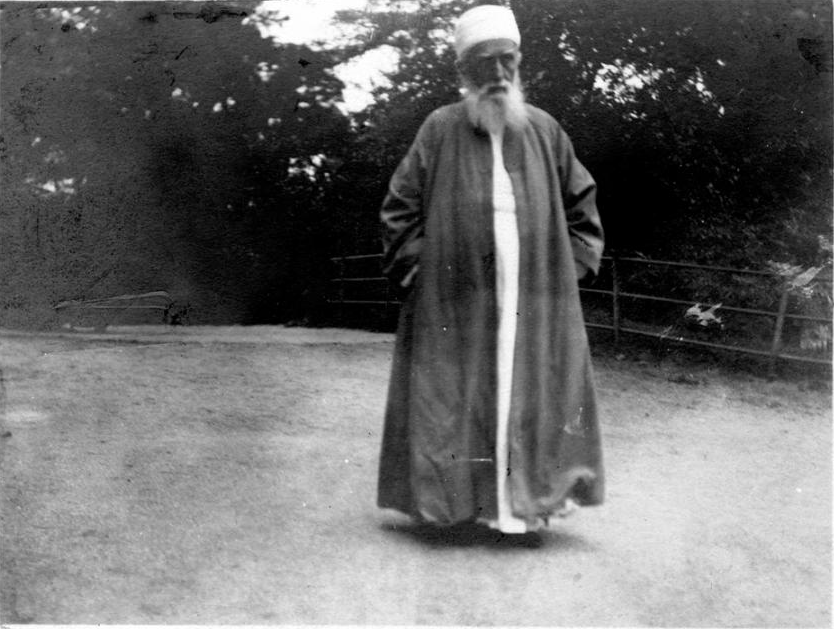A Beauty of Stature
On April 3rd, 1912 Mahmúd wrote:
Our American friends requested that the Master ask us, the Persians, to alter our attire to suit the circumstances of the time and place, changing everything except our Persian hats and coats. He replied, `What harm is there in it? I do not care much about what is unimportant and what is not harmful to the Cause. They are trifles.’
The Master’s Eastern garb attracted a lot of attention. I am struck by the descriptions of His personage, His bearing and of His attire — even His clothes illustrated qualities such as majesty and grace. First-hand accounts of how He looked add a depth and richness to our understanding of Him. Consider this penned portrait:
‘Abdu’l-Bahá enjoyed walking. His secretaries usually accompanied Him. On the street people would turn and glance at Him, and many curious eyes followed Him as He strolled along with great dignitiy and grace in His Eastern robe and turban. ‘Abdu’l-Bahá always wore His native dress, which was a full-length, light-coloured robe, over which He wore an ‘abá or cloak, of beige, tan, brown or cream color [sic]. His shoes were of soft brown leather, partly covering the instep and heel. He wore a low turban wound around with folds of soft white materials from under which His wispy silver hair fell to His shoulders. Encircling His often similing lips was a white mustache and a short, rounded beard. The Master has well-defined, slightly bushy, white eyebrows. To the astonishment of each person who talked with Him, His eyes seemed to change color [sic] as He spoke. Sometimes they looked blue or hazel or grey… When the Master’s face was in repose, deep lines often appeared on His cheeks and between His brows, and His eyes looked sad and showed the suffering He had endured. However, when ‘Abdu’l-Bahá smiled, the sadness vanished, and one saw only glorious beauty… The Master’s complexion was a warm, light tan. His hands were square, strong, yet delicate; when He held your hand, His clasp felt warm and friendly.
Horace Holley recounts that “He displayed a beauty of stature, an inevitable harmony of attitude and dress I have never seen or thought of in men”. This story from The Diary of Juliet Thompson is similarly striking:
In a minute or so Mamma, with that funny boldness of hers which would sometimes burst through her timidity, said: “Master, I would like to see You without Your turban.”
He smiled. “It is not our custom, Mrs Thompson, to take off our turbans before ladies, but for your sake I will do it.”
And oh, the beauty we saw then! There was something in the silver hair flowing back from His high forehead, something in the shape of the head, which, in spite of His age, made me think of Christ.
Sources:
Mahmúd’s Diary, p.28
‘Abdu’l-Bahá: The Centre of the Covenant of Bahá’u’lláh, p.6
‘Abdu’l-Bahá in Their Midst, p.213
The Diary of Juliet Thompson
Photo: the Master walking in New York, from www.centenary.bahai.us



The later part of this story brought uncontrolable tears to my eyes. Well done!